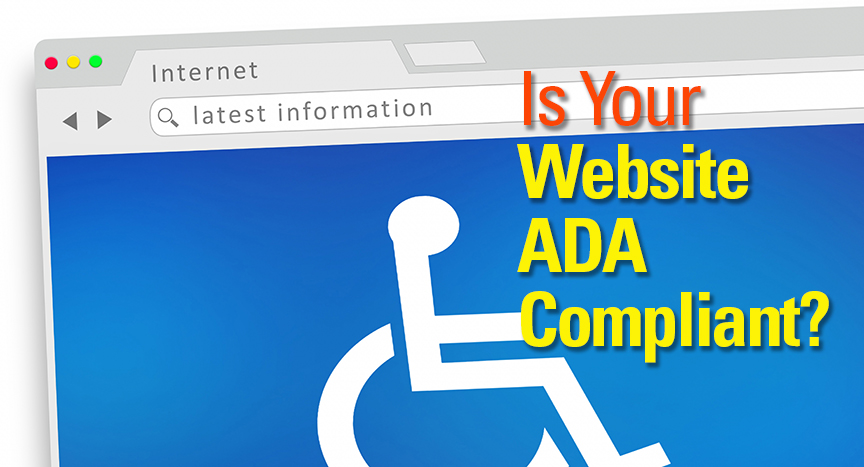It’s a trick question.
Why? Well, unfortunately, there are no Federal laws to tell us what an ADA compliant website is. So no one, at this point in time, can be positive of the precise answer.
The only “guidelines” we have for making a website ADA friendly are just that, guidelines. There are no federal rulings nor any certification entity to guarantee that website is “compliant.” We can only follow the Web Content Accessibility Guidelines (WCAG) 2.1 that was produced in 2018 by the Accessibility Guidelines Working Group of the World Wide Web Consortium (W3C).
Some History
This all stems from the American with Disabilities Act of 1990, legislation designed to assist those with disabilities by providing protection against discrimination because of their disabilities. For the most part, it has helped give people with disabilities better access to services.
So, under Title I of the ADA, any business with at least 15 full-time employees that operates for 20 or more weeks every year is covered by the act. Also, under Title III, businesses that fall into the category of “public accommodation,” such as hotels, banks and public transportation, are also required to comply.
Ironically, the internet was not even a thing when the ADA was passed. The birth of the commercial side of the internet was August 6, 1991. The authors of the act had no idea how this would impact the soon to explode internet.
Retail stores, hotels, and office buildings have long worked to adapt to accessible standards at their physical places of business. And yes, there have been a significant number of lawsuits, both legitimate and frivolous, centered around ADA compliance.
Where We Are Today
Now we are witnessing waves of litigation against websites and and even e-mails. These are a result of Gil v. Winn Dixie, a case of first impression that sided with a sight-impaired plaintiff who sued the store chain and won.
So where does this leave us, and how can we protect ourselves (and our websites)?
At Newman Grace, we are taking a 3-pronged approached to making our client’s websites compliant. First, we work proactively to develop compliance. This includes visible signs, notices, etc., that the owners of the website are working toward compliance. Second, we install ADA compliance software and program critical functionality that is now recognized as being necessary for compliance. This includes many things, but most notably alt tags on all images, electronic reader-friendly content, content transcripts, and website architecture that is compliance-friendly. And finally, we activate on-going compliance measures, to continually update sites to newer standards as the emerge.
Speak with your business insurance provider about any coverage you can purchase that might offset some of the financial burden in case a lawsuit strikes. Also, speak with your webmaster about whether all your images are labeled and named properly as well as having appropriate alt tags. Follow the Web Content Accessibility Guidelines (WCAG) 2.1 as much as possible. Expect to spend more money on developing websites because the time to do so will increase.

